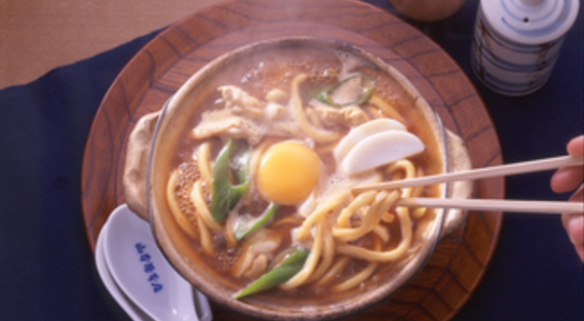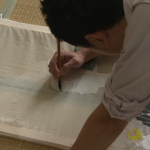FOOD

Nagoya's Home Food - Miso Udon Noodle (Nikomi Udon)
Nagoya city, Aichi Pref.
FOOD
2016
25 minutes Episode(s): 1
english
Japanese




[Food of Japan Season 2]
Out of many regional foods found in Nagoya, one can't avoid 'Miso dishes' which use thick red sauce from soya paste. Variations are Miso Udon Noodle (Miso Nikomi Udon) and pork cutlet with miso sauce (Miso Katsu or Miso Kushikatsu). People enjoy these savory dishes with their rich flavored sauce. The camera focuses on Miso Udon Noodle by Yamamotoya, one of Nagoya's well-known restaurants.
Click here to preview this episode!
Part of the "Food of Japan Series 2"!
Out of many regional foods found in Nagoya, one can't avoid 'Miso dishes' which use thick red sauce from soya paste. Variations are Miso Udon Noodle (Miso Nikomi Udon) and pork cutlet with miso sauce (Miso Katsu or Miso Kushikatsu). People enjoy these savory dishes with their rich flavored sauce. The camera focuses on Miso Udon Noodle by Yamamotoya, one of Nagoya's well-known restaurants.
Click here to preview this episode!
Part of the "Food of Japan Series 2"!
Customers who watch this video also watch
-
Nippon-ga -Taro Yamamoto x Akita Maiko-
2015 30 mins[Craft Masters of Japan] Taro Yamamoto is a professor at the Akita University of Art, but also a young painter who uses traditional Japanese techniques to create paintings with a ‘modern’ and humorous twist to them. This new art style is called ‘Nippon-ga’, and has currently been attracting a lot...more details -
Traditional home dishes from the Gastronomic cityHakata city, Fukuoka Pref.
2014 30mins“Gameni stew", “Mizutaki hot-pot” and “Hakata Zoni stew” are some of the traditional dishes from the gastronomic city of Fukuoka. This documentary focuses on the regional cuisines, which have been passed on generations by Hakatakko (Hakata local people) who are known for their high-spirited characters. It also talks about the...more details -
Yoshida Fire Festival -Japan's 3 Major Unusual Festivals-
2018 30 mins[Festivals of Japan Season 2] Bright flames rise from giant torches, staining the city and skies with their bright red color... The Yoshida Fire Festival is an Important Intangible Folk Cultural Property of Japan that signals the end of summer at Mount Fuji (a World Cultural Heritage.) This episode focuses...more details -
Enchanted by the San'in- Daisen, Tottori Prefecture
2019 30 mins[Beauty of Japan Season 2] San’in, considered to be a mythical home of Gods, is a sacred place where the natural landscapes of Japan prevail. Richard Pierce was enthralled by its charms and has been organizing tours and acting as a guide. In 2017, he even cooperated with the locals...more details



